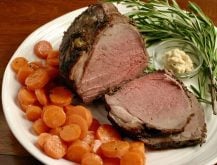It was a difficult year for prairie cabbage growers.
An unprecedented number of white cabbage butterflies were around last summer and they laid a lot of eggs.
The larvae then hatched and munched on the leaves of the cabbage plants.
Growers had to spray more than usual for them, said Doug Waterer, vegetable crops specialist at the University of Saskatchewan.
Luckily there are plenty of control options for the butterfly that are effective as well as safe, he said.
The bigger problem for cabbage growers is the cabbage root maggot. It has always been here but with canola becoming a more dominant crop, the prairie population of root maggots has been rising.
Read Also

Rural Manitoba resources slim on natural disaster planning
A study from Brandon University’s Rural Development Institute has found that many rural and small municipalities don’t have the staff or resources to make formal climate plans against natural disaster.
The maggot lives on the roots of canola as well as plants in the cabbage family.
“It’s becoming extremely difficult to grow a decent crop of cabbage, at least where there are significant amounts of canola grown,” said Waterer.
In a canola field there are millions of plants but in a cabbage field, there is a plant every metre or so. So the root maggot’s adult form, which looks like a regular housefly, will hit on individual cabbage plants more often.
Control of the root maggot can start on a mild winter day. The maggot overwinters about five centimetres deep in the soil and looks like a grain of brown rice, said Waterer.
“If we disc the field on a -14 day, it exposes the pupae to freezing.”
One control that works in spring, when the pupae emerges as an adult fly, is to use its system against it. The fly identifies canola and cabbage by smell, so growers can plant a decoy crop that smells the same, like radish, around the edges of the field.
Waterer said backyard gardeners can stop the fly’s cycle by placing a felt collar around the base of the young cabbage transplant. The fly lays its eggs in the collar but the larvae can’t migrate to the roots and cause damage.
There is also a chemical control that requires a heavy concentration so it can reach the plant’s roots.
“These days that’s not something we want to do.”
Waterer advises growers to time the setting out of cabbage plants to avoid egg laying season. Wait until mid-May, when the dandelions are blooming, he said.
Another way to try to beat the bugs is to use low greenhouses or floating row covers. However, this solution is expensive and requires a lot of labour to bury the edges of the covers in the soil.
Waterer has tested this idea in the U of S fields and said it works best in a sheltered spot, out of the wind. He said it’s not perfect but the covers or greenhouse shelters do control root maggots, flea beetles and loopers.
Variety trials at the U of S have not found any particular cole type that resisted root maggot.
“We find the cauliflower and broccoli are not so bad but rutabaga is an unmitigated disaster.
“The only successful cabbage growers (in Saskatchewan) are south of the canola belt. … Northern growers are not prepared to put that amount of chemical on.”
Waterer said cabbage growers must use “the law of many small hammers” and try several techniques to beat the root maggot.
Alberta and British Columbia have the same problem with root maggot, but Waterer said it must be regarded as less than what many other areas face.
“We don’t have any other bug problem. A California grower will say he has 15 pests just as bad. Spraying in a bug suit is common for them.”
Cabbage Rolls
This is the standard way of preparing cabbage rolls with filling. Some liquid is needed when cooking the filled rolls, and the amount will depend on the nature of the filling. A partially cooked cereal filling absorbs more moisture than a ready-cooked one. Many prefer to use tomato juice for the liquid rather than water or soup stock.
A small amount of lemon juice mixed into the liquid gives a subtle tartness to this dish.
1 LARGE HEAD CABBAGE
RICE or RIce and Meat FILLING
(recipe below)
1-11/2 cups (250-375 mL) TOMATO JUICE
1/2 cup (125 mL) SOUR CREAM, IF DESIRED
2 tbsp. (30 mL) OR MORE BUTTER
OR BACON FAT
SALT AND PEPPER
Remove the core from the cabbage using a sharp pointed knife. Place the cabbage in a deep pot and pour boiling water into the hollow of the core to cover the head completely. Let it stand until the leaves are soft and pliable. Drain the cabbage and take the leaves apart very carefully without tearing them. Cut the hard centre rib from each leaf. Cut the large leaves into two or three sections.
Rice Filling
2 cups (500 mL) RICE
2 cups or less (500 mL) BOILING WATER
2 tsp. (10 mL) SALT
1 MEDIUM ONION, CHOPPED FINE
4-5 tbsp. (60-75 mL) BUTTER
OR OTHER FAT
SALT AND PEPPER
Wash the rice well in a sieve until the water comes off clear. Add to the boiling water, stir in the salt, bring to a brisk boil and let it cook for one minute. Cover, turn off the heat, and allow it to stand until the water is absorbed. The rice will be only partially cooked. Cook the onion in the fat until it is a light golden colour. Mix with the rice and season with salt and pepper. Let cool.
Meat and Rice Filling
1 cup (250 mL) RICE
1 cup (250 mL) BOILING WATER
1 tsp. (5 mL) SALT
1 MEDIUM ONION, CHOPPED
4 tbsp. (60 mL) FAT
1/2 lb. (250 g) GROUND PORK
1/2 lb. (250 g) GROUND BEEF
1 EGG
SALT AND PEPPER
Cook rice as above. Meanwhile, cook the onion in the fat until tender. Add the pork and beef, stir, and cook until lightly browned.
Combine with the rice and cool slightly. Mix in the egg. Season the mixture with salt and pepper. The filling for cabbage rolls should be well seasoned because some of the seasoning will be absorbed by the leaves, giving a flat taste to the finished product.
Line the bottom of a roaster with a few cabbage leaves. Place a generous spoonful of the filling on each leaf and roll lightly. Arrange the rolls in layers in the pot. Sprinkle each layer with some salt. Combine the liquid with the sour cream, if used, melted fat, and seasoning; pour over the cabbage rolls. The liquid should barely show between the rolls. Protect the top from scorching by covering it with a few large leaves. Cover rolls tightly and bake in a moderate oven 350 F (180 C) for 11/2 to 2 hours or until both the cabbage and filling are cooked. Serve hot with chopped crisp bacon, sour cream, tomato sauce or any favourite sauce.
Source: Traditional Ukrainian Cookery by Savella Stechishin, Trident Press Ltd. Winnipeg, 1959.














